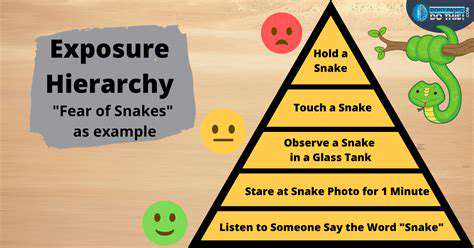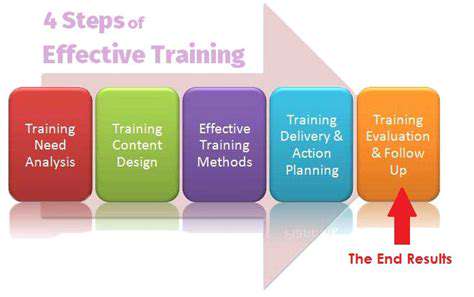Training
Socialization
Puppy Training
Noise Sensitivity
Behavioral Psychology
Emotional Responses
Introducing Your Puppy to Construction Noises and Traffic Sounds
- Hide treats near speakers playing low-volume traffic sounds
- Initiate tug-of-war when dishwasher runs
- Practice find it commands during garbage truck pickup times
Real-World Sound Immersion Techniques
When introducing city sounds, start with early Sunday mornings when traffic is light. Bring high-value treats like freeze-dried liver to reward calm behavior. Week 1 might involve sitting 50 feet from a construction site, gradually decreasing distance over 2-3 weeks.
Gradual Exposure Techniques That Work
The 3-Second Rule for New Sounds
When introducing any new noise:
- Play sound for 3 seconds
- Immediately offer treat
- Pause 10 seconds
- Repeat 5x
- Increase duration by 1-second increments
This neuroscience-backed method prevents sensory overload while building positive associations.
Customizing Exposure Levels
Use free apps like Decibel X to measure environmental noise. Puppies under 16 weeks should start with sounds below 60dB (normal conversation level), gradually working up to 85dB (blender noise) over 8 weeks.
When Professional Help Becomes Essential
Red Flags Requiring Intervention
Seek immediate help if your puppy shows:
- Refusal to eat for 12+ hours after noise exposure
- Self-injury from frantic escape attempts
- Diarrhea/vomiting triggered by specific sounds
These indicate neurological stress responses needing specialized treatment.
Modern Treatment Options
Veterinary behaviorists now use:
- Biofeedback training with heart rate monitors
- VR sound immersion therapy
- Targeted pheromone diffusers

Read more about Introducing Your Puppy to Construction Noises and Traffic Sounds
Key Stages, Training Techniques, and ChallengesRecognizing the various developmental stages of puppies is essential for fostering their growth, behavior, and training success. From the initial neonatal stage to adolescent challenges, each phase presents unique opportunities for owners to instill positive behaviors and resilience in their pets. Early Developmental StagesDuring the neonatal period (up to two weeks), puppies rely heavily on proper nutrition and warmth. This stage sets the groundwork for future interactions and behaviors. Following this, the transitional stage (up to four weeks) marks the beginning of sensory development as puppies start to open their eyes and ears, paving the way for socialization. Importance of SocializationThe socialization period (three to twelve weeks) is vital for developing a well-adjusted dog. This timeframe encourages exposure to diverse environments, people, and experiences, reducing the likelihood of anxiety and aggression later in life. Engaging with other dogs and practicing positive interactions will ensure adaptability and resilience as they grow. Training through AdolescencePuppies enter the adolescent phase between six to eighteen months, where they may test boundaries. This changing behavior necessitates more structured training methods along with continued reinforcement of earlier lessons. Activities like agility training or obedience classes can strengthen the bond between owner and pet while promoting positive behavior. Monitoring Maturity and Behavioral ChangesBy the age of eighteen months, dogs typically reach maturity, and owners should be vigilant in recognizing behavioral changes. Observations during this period can help adjust training approaches, ensuring continued improvement and stability of behavior. This stage is also a prime opportunity to implement socialization strategies that may mitigate lingering fears or aggressive tendencies. Common Challenges in Puppy TrainingAs puppies grow, they may face various behavioral issues like jumping or excessive barking. Identifying triggers and implementing positive reinforcement techniques can redirect these behaviors effectively. Short, frequent training sessions coupled with consistency foster a more productive learning environment. Tailoring Your Training ApproachEach puppy is unique; therefore, training methods should be adapted to accommodate individual personalities and learning styles. Flexibility in your approach ensures long-term success and engagement. Recognizing your puppy’s temperament and tailoring techniques – whether through play or structured lessons – is critical. The Role of Socialization and ConsistencyEngaging in socialization opportunities such as puppy classes can significantly aid in developing social skills and coping mechanisms. Staying consistent with commands and rewards throughout the training process enhances understanding and prevents confusion. Seeking Professional HelpIf challenges arise or training becomes overwhelming, consulting a professional dog trainer can be beneficial. These experts can provide personalized guidance and strategies to address specific behavioral issues effectively. ConclusionCustomized training is paramount in nurturing well-behaved, adaptable dogs. By understanding developmental stages, employing consistent techniques, and incorporating play, owners can set their puppies on the path to becoming well-adjusted adult dogs. Adopt a proactive, flexible approach to training, and remember that the bond between you and your puppy will flourish with patience, understanding, and love.
Mar 29, 2025
The Importance of Early Socialization for DogsUnlocking Trust and Connection Early socialization is essential for a dog's development, particularly during the critical socialization window from three to fourteen weeks of age. Puppies exposed to diverse experiences during this time grow into well-adjusted, confident adult dogs, significantly reducing the likelihood of behavioral issues such as anxiety, fear, and aggression. Mastering the Art of SocializationEngaging your new puppy in socialization involves introducing them to various people, environments, sounds, and experiences. Enroll them in supervised puppy classes, take them on trips to different places, and expose them to various sounds like traffic or household appliances. Gradual exposure helps desensitize them, making it less likely for them to react fearfully in adulthood. Lasting Behavioral BenefitsWell-socialized dogs are adaptable, typically displaying lower anxiety levels and better social skills. This adaptability allows for enjoyable outings, whether to parks or on family travels. By fostering positive interactions and compliance through training, owners can witness improved behavior patterns in their pet's adult life. Owner's Role in SocializationAs active participants, dog owners play a vital role in their puppy’s socialization. Balancing structured activities with casual exposure to daily life helps reinforce good behavior. Being a calm and confident presence encourages puppies to mirror that behavior, further helping to reduce anxiety in new situations. Myths DebunkedMany misconceptions surround dog socialization which can hinder a puppy’s learning process. It’s never too late to socialize an adult dog; while it may require more patience, adult dogs can still adapt. Moreover, not every interaction is beneficial—structured, positive experiences are crucial to avoiding reinforcement of undesirable behaviors. Building a Healthier Human-Canine RelationshipThe bond between dogs and their owners thrives on trust and effective communication. Socialized dogs demonstrate clearer signals regarding their needs, which prevents misunderstandings and helps solidify the owner-pet relationship. Furthermore, better social experiences often equate to fewer behavioral issues and a lower incidence of stress-related problems. Engaging in Community and Social OpportunitiesOpportunities for socialization extend to group training classes, local parks, and community events. These activities not only enhance your puppy's social experience but also allow owners to connect with each other, establishing support networks that can enhance overall dog welfare. Your Commitment to Lifelong SocializationRecognizing that socialization is a lifelong endeavor ensures your dog remains well-adjusted. Regular interactions through playdates, community events, or local dog owner groups enable dogs to thrive behaviorally and socially, ultimately leading to a more fulfilling companionship.Investing time in socializing your dog transforms not only their behavior but significantly enriches the owner's experience, contributing to healthier, happier lives for both dog and human. Embrace early socialization and create a nurturing, well-behaved pet!
Mar 29, 2025
Mastering the Lie Down CommandTeaching your puppy the 'lie down' command is an essential step in obedience training that lays the groundwork for good canine behavior. This command establishes a solid bond between you and your puppy, offering control in various situations while promoting calmness and impulse control. By incorporating the lie down command into your training regimen, you can help your puppy stay focused and reduce anxiety, ultimately leading to a well-behaved companion. The Importance of the Lie Down CommandImplementing the lie down command is crucial for several reasons:- Foundation of Obedience: Training your puppy to lie down sets clear expectations for behavior, especially in public settings or during interactions with guests. A well-mannered puppy is less likely to jump or become disruptive.- Improving Focus and Impulse Control: By mastering this command, your puppy learns to resist distractions and focus on you. Research highlights that dogs practicing obedience commands showcase enhanced cognitive functions, promoting mental agility.- Promoting Calmness: The simple act of lying down serves as a signal to your puppy that it's time to relax. It can significantly reduce their stress levels, especially in noisy or bustling environments. Choosing the Right Training EnvironmentCreating an effective training environment is key to your puppy's success:- Quiet Locations: Opt for a distraction-free space, such as a small room in your home, to ensure your puppy can focus.- Use of Tools: Incorporate training mats and treats to facilitate learning, with positive reinforcement methods proving most effective in building long-lasting habits. Step-by-Step Guide to Teaching the Lie Down Command1. Preparation: Ensure you are in a controlled environment. Gather treats for positive reinforcement.2. Basic Commands: Start with the 'sit' command to establish a position before introducing 'lie down'.3. The Process: Hold a treat near your puppy's nose, gradually lowering it towards the ground while saying lie down. Praise enthusiastically when they comply.4. Reinforcement: Regular practice and varied rewards keep your puppy engaged in their training. Overcoming Training ChallengesTraining can sometimes present hurdles:- Distractions: Minimize external stimuli during sessions to help your puppy concentrate.- Resistance: If your puppy struggles with understanding the command, break it down into smaller tasks and use consistent positive reinforcement.- Patience and Professional Help: Remember that training takes time. If persistent issues arise, consider consulting a professional trainer for tailored guidance. ConclusionThe 'lie down' command is more than just a trick—it's a valuable tool that enhances your puppy's obedience, focus, and confidence. By investing time in training and using the right methods, you'll foster a loving relationship with your pet that thrives on mutual respect. Embrace the journey of training with patience and consistency, and watch your puppy grow into the well-mannered companion you've always wanted.
Mar 30, 2025
A Comprehensive Guide to Puppy TrainingTraining your puppy goes beyond just teaching basic commands; it's an essential part of ensuring a well-behaved and confident adult dog. This guide explores the importance of advanced commands, creating a supportive training environment, and innovative techniques like clicker training for effective learning. Understanding the Importance of Advanced CommandsAdvanced commands are vital for your puppy's development. They not only strengthen the bond between you and your furry friend but also mitigate behavioral issues, leading to a happier, more confident pet. By investing time in obedience training, you're laying the groundwork to prevent common problems related to anxiety or destructiveness later on. Setting Up for Success: The Right EnvironmentA conducive training environment is crucial. Choose a quiet, distraction-free space and gather essential tools like treats and clickers. Positive reinforcement is key—patience and encouragement can significantly impact your puppy's learning processes. Progression of CommandsStart with basic commands, gradually introducing more complex tasks. Linking new commands to existing knowledge creates a clear learning pathway. Adding play and interactive elements will keep your puppy engaged, fostering a more dynamic and enjoyable training experience. Common Mistakes to Avoid When TrainingExpecting too much too soon can hinder your puppy's learning. Focus on small, measurable goals and avoid rewarding undesirable behavior. Setting clear boundaries will enhance training effectiveness. Measuring Progress and Adjusting TechniquesTrack your puppy’s learning journey in a training journal. If a method isn't working, don't hesitate to adapt your techniques or reinforcement types. Flexibility in your approach is crucial for long-term success. Mental Stimulation and Innovative TechniquesIncorporate both advanced commands and mental challenges to keep your puppy mentally stimulated. Puzzle toys and clicker training are effective strategies, enhancing both cognitive skills and obedience. Engaging your puppy in games and other enjoyable activities will solidify learning and make training a fun experience. Socialization and Real-World TrainingEarly socialization is crucial to prevent future behavioral issues. Ensure your puppy is exposed to various environments and stimuli. Incorporating real-world training with structured approaches will increase their adaptability and confidence. Building a Supportive CommunityParticipating in training classes can deepen your puppy's socialization while providing a sense of community among pet owners. Engage with your puppy’s experiences and continue socializing as they grow to ensure a well-adjusted adult dog. Consistency and Patience: The Keys to SuccessEstablishing a consistent training routine helps eliminate confusion. Dogs learn through repetition, so uniform commands and cues are essential. Patience is equally important, as each puppy has a unique learning curve. ConclusionTraining your puppy is a rewarding journey that enhances their behavior and strengthens your bond. By focusing on advanced commands, creating a positive environment, and incorporating innovative techniques, you can ensure your puppy develops into a happy and well-adjusted companion. Remember, consistency and patience will yield the best results in your training endeavors!
Mar 30, 2025
Understanding Release Words in Dog TrainingA release word is a fundamental command in dog training that signals when a dog is free to move or act without restrictions. This concept is vital for establishing clear boundaries during obedience training and helps pets and their owners communicate effectively. By teaching your puppy an appropriate release word, you create a more structured learning environment, enhancing their understanding of commands while fostering a harmonious relationship. Importance of Release Words in TrainingRelease words clarify the difference between enforced commands and moments of freedom. They not only set boundaries for expected behaviors but also help reduce confusion during training sessions. Common examples include “Okay,” “Free,” and “Release,” but it’s crucial to choose a word that your puppy can easily recognize. Consistency in using the same release word is essential; mixed usage can create confusion in your dog’s learning process. Effective Teaching StrategiesTo teach a release word, start with foundational commands like “Sit” or “Stay.” Once the puppy successfully follows the command, enthusiastically use the release word to signify they can act freely. Reinforce this with treats or praise, creating a positive association that enhances their understanding. Engage in various training scenarios to ensure your puppy can connect the release word to its meaning across different contexts. Common Mistakes to Avoid Inconsistency in using the release word can lead to confusion, making it vital to apply it consistently across all training sessions. Additionally, avoid using the release word too casually—reserving it for specific instances reinforces its significance. Keeping the release word distinct from other commands prevents misunderstanding and enhances training effectiveness. Long-Term Benefits of Release WordsA well-established release word not only contributes to a well-trained dog but also creates clear communication that promotes trust between you and your puppy. Over time, this clarity helps maintain behavior boundaries, even in dynamic environments such as parks or social gatherings. A strong bond formed through effective communication leads to a fulfilling companionship that endures throughout your pet’s life. Promoting Focus and CalmnessIntegrating a release word into training improves your puppy’s focus and reduces anxiety during sessions. Applying consistent terminology along with non-verbal cues creates a structured training environment, reducing uncertainty. Regular practice enhances obedience, allowing your puppy to respond adeptly to commands while benefiting from routines that include both play and relaxation.By choosing the right release word and implementing strategies that reinforce its meaning, you set the stage for successful training. Remember that patience and consistency are key to mastering this essential component of dog training. Ultimately, the goal is not only effective training but also fostering a joyful and trusting relationship with your furry companion.
Mar 30, 2025
The Importance of Flooring in Puppy SocializationWhen it comes to puppy development, the type of flooring encountered can significantly affect comfort, behavior, and overall socialization. As puppies explore their surroundings, they interact with various surfaces, including tile, carpet, hardwood, and concrete, each influencing their confidence and adaptability. Understanding Puppy Behavior on Different FloorsPuppies primarily engage with their environments through touch, making the texture and material of flooring essential. For instance, slick surfaces like tile can lead to slipping, resulting in anxiety and hesitation to explore. In contrast, soft surfaces provide a sense of security, helping puppies become more adaptable to diverse environments. By familiarizing them with various flooring types, owners can support their puppies’ emotional and physical development. Influencing Physical DevelopmentProper flooring ensures traction for developing joints and muscles, crucial during periods of rapid growth. Surfaces like carpets offer better grip than smooth floors, allowing puppies to run and play safely. The right flooring not only enhances comfort but also fosters healthier physical development. Owners are encouraged to invest time in guiding their puppies through different surfaces for optimal growth. Creating a Safe Exploration EnvironmentSetting up a puppy-friendly home involves ensuring that flooring is free from hazards. Gradually introducing new surfaces can help prevent overwhelming experiences. Positive reinforcement, such as treats and praise, encourages exploration and builds confidence. Such careful planning creates a safer environment, ensuring that puppies feel secure as they learn to navigate various textures. Choosing the Right Flooring MaterialEach flooring material serves specific needs based on durability, safety, and aesthetics. Hardwood floors may be appealing but can be slippery, while rubber mats offer safety but might clash with home decor. During early socialization weeks, providing softer, more forgiving surfaces allows puppies to develop confidence and adaptability in their movements. Integrating Training with Flooring DiversityIncorporating different flooring types into training sessions can enhance adaptability. By using various textures during training, puppies can build confidence and learn how to navigate unfamiliar surfaces. Creating playful environments through toys and treats reinforces the idea that diverse flooring is associated with fun and exploration, aiding their socialization process. Progressive Exposure TechniquesSocialization is a crucial stage in a puppy's life, particularly between 3 and 14 weeks of age. Gradually exposing puppies to varied surfaces through controlled environments helps them achieve comfort, leading to essential behavioral development. Utilizing positive reinforcement during these experiences fosters trust and encourages exploration. Engaging in Fun Activities Across SurfacesActivities play a vital role in socialization. On softer surfaces like carpets, puppies can engage in playful interactions that stimulate curiosity. When introducing them to tile, interactive games combined with positive reinforcement promote confidence. On harder surfaces, like hardwood, controlled and gentle movements can help alleviate fears of slipping. Outdoor encounters with concrete should be balanced with softer terrains to ensure comfort. Monitoring ProgressThroughout the socialization process, closely monitoring puppy behaviors and reactions is crucial. Adjusting strategies based on their comfort levels can enhance learning experiences. By documenting progress and adapting gradually, owners can help their puppies acclimate confidently to various floor types.By understanding the impact of flooring on puppy socialization, pet owners can cultivate a nurturing environment that encourages healthy development, confidence, and adaptability in their furry friends.
Mar 30, 2025
Recognizing the Importance of Early Socialization for PuppiesEarly socialization plays a critical role in shaping your puppy's development, particularly between three to fourteen weeks of age — a period known as the critical socialization window. During this time, puppies are highly receptive to experiences that will help them grow into confident and well-adjusted adult dogs. Benefits of Early SocializationEngaging your puppy in a variety of social experiences will lead to numerous benefits, including increased adaptability, reduced fear and aggression, and a well-rounded temperament. Proper socialization lays the groundwork for a balanced pet capable of adjusting to new environments and encounters with ease. Socialized puppies learn to cope with challenges and generally exhibit lower stress levels when confronted with unfamiliar situations. Furthermore, exposing them to different people, sounds, and settings helps ensure they grow into amiable and friendly companions. Common Mistakes in Early SocializationA common misconception among puppy owners is that socialization solely involves meeting other dogs. However, it encompasses exposure to diverse stimuli, such as different environments and people. For example, failing to introduce your puppy to loud streets or crowded spaces can instill fear later on in life. Additionally, socialization should happen in various contexts beyond playful encounters. It’s essential to incorporate calm moments during training sessions or car rides to foster positive associations. Understanding and Avoiding OverstimulationRecognizing signs of overstimulation in your puppy is crucial. Behaviors like avoiding eye contact, excessive barking, or restlessness indicate that your puppy might be overwhelmed. To avoid overstimulation, set boundaries during socialization sessions by starting in calm environments and gradually introducing new stimuli. Monitor your puppy's reactions to ensure that their discomfort is minimized, facilitating a more enjoyable experience. Positive Reinforcement StrategiesUsing positive reinforcement enhances socialization effectiveness. Reward your puppy with treats and praise for calm behavior during new encounters. This method not only builds positive associations with various environments but also strengthens the bond between you and your pet. Consistency is key; ensure that the same rewards are given for the same behavior to avoid confusion. Creating a Structured ScheduleEstablishing a structured socialization schedule enriches your puppy’s developmental experiences. Engaging regularly in diverse activities, such as park visits or controlled playdates, enhances learning opportunities. Aim for a balance of both familiar and new experiences, which will nurture adaptability and resilience. Long-Term BenefitsThe effort you invest in socializing your puppy lays the foundation for a happier, more harmonious adult dog. Properly socialized dogs tend to exhibit fewer behavioral issues and are easier to train. They communicate more effectively with both humans and other animals, which ultimately leads to a more fulfilling relationship as they grow older.In summary, early socialization is not just beneficial; it’s essential for your puppy’s growth. By understanding its importance and approaching it with the right strategies, you’ll foster a lifelong bond and a well-adjusted furry friend.
Apr 02, 2025
Regulations vary widely, so familiarize yourself with your local transit authority's pet policies.2. Practice Consistency: Keep training sessions regular and consistent to build your puppy’s confidence.3. Calm Demeanor: Keep cool during challenging situations—your puppy takes cues from you.4. Bring Comfort Items: Familiar toys or blankets can significantly soothe anxious puppies.By following these tips and guidelines, you will create a well-socialized puppy ready for public transport experiences. Socializing your puppy effectively ensures not only a relaxed pet but also a more enjoyable journey for you both.
Apr 06, 2025
Your Essential Guide to Puppy TrainingSummaryThe Stay command is a fundamental skill for every puppy, serving as a cornerstone for impulse control and safety in various environments. Within this comprehensive guide, we'll delve into the essential aspects of teaching your puppy the Stay command, from foundational training techniques to troubleshooting challenges, ensuring your furry friend becomes well-behaved and attentive. Importance of the Stay CommandThe Stay command is not just about getting your dog to halt; it enhances their impulse control and strengthens the bond of trust between you and your puppy. This command is particularly crucial in high-distraction situations, such as vet visits, where staying calm is imperative. Step-by-Step Training TechniquesTraining your puppy to Stay begins in a quiet, distraction-free environment. Start with clear, firm commands and progressively increase the distance and duration of the stay. Consistency and short, regular sessions are key to reinforcing the behavior and building your puppy's confidence. Common Mistakes to AvoidAvoid using multiple verbal cues or hand signals, as this can confuse your puppy. Stick to a clear command and ensure immediate rewards following successful stays, as timing is crucial in reinforcing desired behavior. Encouraging Longer DurationsOnce your puppy masters the basic Stay command, incorporate duration training. Gradually extend the time they must remain in place before receiving a reward, which fosters patience and focus, especially in distracting environments. Integrating Stay into Daily LifeTo enhance obedience, practice the Stay command in various daily situations, such as before meals or during walks. Involve family members for varied command reinforcement, helping your puppy generalize the skill across different contexts. Troubleshooting ChallengesIf your puppy struggles with the Stay command due to excitement or anxiety, reevaluate your training environment. Maintain a calm setting, and never scold; gentle guidance and positive reinforcement will yield better results. Building a Strong BondTraining is a fantastic opportunity to strengthen your connection with your puppy. Use positive reinforcement techniques and engage in playful activities, making the learning journey enjoyable for both you and your dog. Practicing in Different EnvironmentsExpose your puppy to varying distractions by practicing commands in different settings, which helps improve their focus and resilience. Short, consistent training sessions can lead to remarkable progress in diverse environments. Utilizing Training Tools and TechnologyModern tools, including clickers and apps, can enhance your training experience. Choose the right equipment based on your puppy's temperament and ensure personalized interaction for effective learning outcomes.ConclusionTraining your puppy to master the Stay command takes patience and dedication but results in a well-mannered pet you can trust. By employing the strategies outlined in this guide, you’ll build a solid foundation for future training, leading to a happier and more confident pup.
Apr 13, 2025
The Fundamentals of “Sit,” “Stay,” and “Come”Understanding the basic commands for your puppy is crucial in establishing a solid foundation for good behavior. This guide explores three essential commands—Sit, Stay, and Come—as cornerstones of effective training. Sit: A Basic Yet Fundamental CommandThe command sit is one of the first instructions your puppy should learn. Not only does it foster communication between you and your pet, but it also instills a sense of trust. Teaching sit can help curb unwanted behaviors like jumping and can effectively manage your puppy’s energy levels. How to Teach Sit:1. Hold a treat above your puppy’s nose.2. Move the treat backward; this will prompt your puppy to lower its bottom.3. As soon as they sit, reward them with the treat and praise.Engaging in short training sessions of 5-10 minutes multiple times a day aids in retention. Over time, you’ll notice significant improvements in your puppy's obedience. Stay: Instilling Patience and ControlTeaching stay involves instilling a sense of patience in your puppy. This command reinforces boundaries and control, making your pet more sociable and well-rounded. Training requires patience and consistency, as puppies learn at varying speeds.Effective Techniques for Teaching Stay:- Start in a quiet, controlled environment to minimize distractions.- Gradually increase the distance while your puppy remains in place.- Combine verbal commands with hand signals to enhance understanding.Incorporating stay into your puppy's daily routine can reinforce learning while making training feel less like a chore. Come: Building Trust and SafetyThe come command is vital for your puppy's safety, helping them build trust and enhancing their ability to respond positively to commands. Positive reinforcement plays a crucial role; offering treats or affection after compliance fosters a secure environment for learning.Safety Tips During Training:- Begin training in a confined area to minimize distractions.- Keep sessions short and engaging to avoid overexertion. Tips for Successful Training1. Understanding Learning Styles: Each puppy is unique. Some may respond better to visual cues, while others thrive on verbal commands. Tailoring your approach can enhance their learning speed.2. Positive Training Environment: Ensure a calm, distraction-free training space. Utilize positive reinforcement to create a supportive atmosphere that encourages focus.3. Consistency: Use the same commands and signals every time you train. Involve family members to ensure uniformity in training approaches.4. Incorporating Training into Daily Life: Embed commands into everyday activities—like asking your puppy to sit before meals or when putting on their leash—to reinforce learning naturally.5. Monitoring Progress: Regularly check your puppy's progress. Adjust techniques based on their needs and celebrate small victories to keep both you and your puppy motivated. ConclusionInvesting time in teaching your puppy commands like sit, stay, and come sets the groundwork for a well-behaved and harmonious relationship. Patience, consistency, and positive reinforcement are your keys to success. With daily practice, you can guide your puppy toward becoming a confident and obedient companion.
Apr 14, 2025
The Importance of Early Exposure to Clothing for Puppies As new puppy owners, understanding your furry friend’s comfort with clothing is essential for their emotional and physical well-being. Puppies are naturally sensitive to various stimuli, including textiles, which leads to the importance of early exposure to clothing. This article explores the significance of introducing clothing in a gradual, positive manner, and provides practical tips for making the experience enjoyable for your puppy. Understanding Sensitivity in PuppiesPuppies are equipped with developing nervous systems, making them more susceptible to tactile sensitivities. Early acclimatization with different fabrics and textures can significantly reduce future anxiety regarding clothing. Studies suggest that socialization before the age of 16 weeks fosters adaptability, allowing puppies to confidently engage with their environment as adults. Building Positive Associations with ClothingUtilizing positive reinforcement, such as treats and praise, during clothing introductions can create favorable associations for your puppy. Start small with lightweight garments, linking their experience with playtime or enjoyable activities. This method encourages trust, making dressing a non-stressful routine. Safety and Comfort ConsiderationsSafety should be a top concern when introducing clothing. It’s crucial to select items that are safe, fit well, and allow for natural movement. Monitor your puppy's reactions for signs of discomfort, like excessive scratching or attempts to remove the clothing. Ensuring that garments are breathable and match your puppy's activity level will enhance their experience. Long-Term Benefits of Early Clothing ExposureGradual exposure to clothing fosters long-term confidence and reduces behavioral issues. Puppies that are introduced to clothing can adapt more effortlessly to essential items like jackets and harnesses later in life, making them more prepared for various situations and environments. Choosing the Right ClothingUnderstanding your puppy's breed and size is vital for selecting appropriate clothing. Be sure to measure your puppy accurately to avoid discomfort. Materials should be soft and breathable, accommodating seasonal needs. Moreover, prioritize comfort and ease of movement to prevent anxiety while wearing clothing. Introducing Clothing GraduallyGauge your puppy’s comfort level with new textures and items before introducing clothing. Employ gradual methods, like letting them sniff garments before wearing them. Use positive reinforcement during the introduction process to build comfort over time. Monitor their progress closely and adjust based on their cues. Enhancing Socialization through AccessoriesClothing can enhance social interactions by helping puppies feel more confident. Start with less restrictive apparel, and progressively introduce various accessories to create a familiar environment. Engage in positive social settings to observe how your puppy reacts and to promote confidence. Monitoring Comfort and AdaptationEach puppy adjusts differently to clothing. Keep an eye on their body language and reactions to understand their comfort levels. If discomfort persists, consult a professional who can provide tailored guidance.In conclusion, early exposure to clothing, when introduced thoughtfully and positively, is crucial for a puppy’s growth and socialization. This practice not only enhances their confidence but also sets the stage for a happy, well-adjusted adult dog. By prioritizing comfort, safety, and a gradual introduction, you can make dressing your puppy an enjoyable experience for both of you.
Apr 15, 2025
A Comprehensive Guide for Pet Owners OverviewUnderstanding how loud noises affect puppies is essential for fostering a positive environment in your home. Puppies are particularly sensitive to sound due to their developing nervous systems, making them more susceptible to stress and anxiety triggered by loud or sudden noises. This guide delves into the sensitivity of puppies to sounds, strategies for desensitization, and the importance of creating a sound-friendly environment. Puppy Sensitivity to SoundPuppies are born with acute hearing, allowing them to perceive higher frequencies that adult dogs can't. Consequently, exposure to household noises like television or electronic devices can startle them. Research highlights the benefits of introducing varied sounds early on, which can ultimately lead to more confident adult dogs. By gradually familiarizing your puppy with these sounds, you can help reduce the likelihood of fear or anxiety in adulthood. Strategies for Desensitizing PuppiesGradual Exposure: Start with low-volume sound exposure while engaging your puppy in playful activities. Gradually increase the volume as they grow comfortable, always monitoring their reactions.Positive Reinforcement: Rewarding calm behavior with treats or praise strengthens positive associations with sounds, fostering confidence and resilience in your puppy.Environmental Considerations: The setting in which a puppy is raised significantly impacts their sound sensitivity. Puppies in loud or busy environments may adapt better to noises than those raised in isolation. Creating a Sound-Friendly EnvironmentTo ease your puppy into the world of sounds, it is vital to create a safe space for them. Providing an area where they can retreat when feeling overwhelmed can help them feel secure. Pair exposure to household noises with positive experiences, such as playtime or treats, to build a trusting relationship with sounds. Tips for a Sound-Friendly Space:- Begin with low volumes to prevent overwhelming reactions. - Incorporate background noises gradually, offering treats during exposure.- Always watch for signs of distress and adjust the situation accordingly. Coping Strategies for Anxious PuppiesPuppies may display various anxious behaviors in response to unfamiliar sounds. These behaviors can be addressed through gradual exposure techniques and creating a routine that helps reduce anxiety.Consistency is Key: Establishing a daily routine offers your puppy stability and reassurance, helping to alleviate anxiety triggered by disruptive or loud sounds in their environment.Professional Support: If anxiety persists despite your efforts, consider consulting with a professional dog trainer or behaviorist. They can provide personalized strategies and may recommend therapeutic options to help ease your puppy's fears. ConclusionIntroducing your puppy to various sounds in a controlled and positive way is crucial for their long-term emotional well-being. By understanding their sensitivity and employing effective desensitization techniques, you can help your puppy grow into a confident, well-adjusted adult dog. Create a nurturing environment that promotes gradual exposure to sounds, reinforcing comfort and safety, and seek professional guidance when necessary to ensure a successful adjustment.
Apr 16, 2025










